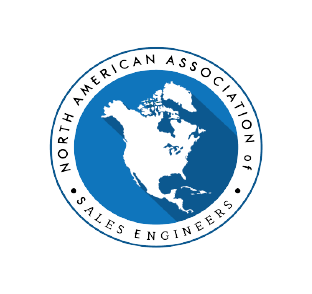North American Association of Sales Engineers
The Impact of Market Orientation and Market Intelligence on Organizational Performance
(By Inna Hüessmanns, MBA) In recent years, academic studies have focused on the concept of market orientation with the aim of understanding the effect of market orientation on organizational performance. Empirical evidence indicates that market orientation is positively associated with superior performance.
Organizations that better respond to market requirements and changing market conditions enjoy sustainable competitive advantage and superior profitability. Market orientation represents superior capabilities in understanding and satisfying customers. Its key components are:
- A customer oriented corporate culture.
- Systematic generation, dissemination, and utilization of market intelligence.
- Interfunctional utilization of market intelligence.
Market-oriented organizations have superior market intelligence capabilities, such as market sensing, customer analysis and customer linking, competitive intelligence, and channel management capabilities. These capabilities deliver superior market insights that guide spanning capabilities.
In contrast, the capabilities of internally oriented organizations are poorly guided by market considerations.
Every organization develops capabilities to produce and deliver its products or services. Some capabilities must be superior if the business is to outperform the competition. These are the distinctive capabilities that support a valuable market position that is difficult to match and permit organizations to deliver superior value to customers in a cost-effective way.
Spanning capabilities are exercised through processes used to satisfy customers’ needs identified by the market intelligence capabilities. Market intelligence dissemination, sales processes, and new product development processes are examples of these processes. Managing these processes so they cannot be readily matched by competitors is very different from managing vertical functions in a traditional hierarchical organization. Many internal boundaries must be crossed, and market intelligence should be readily available to all departments.
Market Intelligence as a Distinctive Capability
Market orientation emphasizes the ability of organizations to continuously learn about their customers, competitors, channel partners, and industry trends in order to act on trends in present and target markets. In market-oriented organizations the processes for generating, interpreting, and utilizing market intelligence are more systematic, thoughtful, and anticipatory than in internally focused organizations.
Three components of a market-oriented organization can be distinguished: customer orientation, competitor orientation, and interfunctional coordination.
The Figure below explains the key components of a market-oriented organization.

Market-oriented organizations have the capabilities to anticipate industry trends and changes of customers’ strategies ahead of their competitors.
Market intelligence represents a know-what advantage that enables organizations to be both more effective and efficient.
Customer Orientation and Analysis
Customer orientation places the highest priority on continuously analysing customers’ needs and finding ways to provide superior customer value. Customer oriented organizations innovate throughout their entire business system, as opposed to solely in products or services.
Competitor Orientation and Customer Analysis
Competitor orientation and analysis entail gathering intelligence on the following and other questions and facilitate innovations: (1) What is the basis for your organization`s competitive advantage? (2) Who are the competitors? (3) What technologies do they offer? and (4) Do they represent an attractive alternative from the perspective of the target customers? (5) What does your organization need to survive competition?
Interfunctional Coordination
Interfunctional coordination is one of the core components of market orientation.
Empirical evidence indicates that coordinated dissemination of market intelligence among various functions was instrumental in the organization’s responsiveness to customer needs.
Innovation and Performance
A market-oriented culture facilitates organizational innovativeness, and this relationship appears even stronger in turbulent environmental settings. In turbulent environmental settings, organizations with superior market intelligence exhibit superior responsiveness, typically through organizational innovativeness, in dealing with the turbulences in the environment.
In summary, a market-oriented corporate culture and a proper execution of market orientation are significant factors in achieving superior corporate performance.
Managerial Recommendations:
Many organizations have tried to become market oriented but have failed to sustain this orientation.
The challenge is to understand how market orientation can be achieved and sustained. The most distinctive features of market-oriented organizations are their mastery of the market intelligence generating capabilities.
We help you to understand your customers’ needs, analyze your company’s performance against competition, understand your long-term growth opportunities, train your salesforce in market intelligence, and develop a market-oriented organization.
For market intelligence and change program consulting and implementation enquiries please contact:
Inna Hüessmanns, MBA
International Growth Solutions
e-mail: ih@i-g-solutins.de
www.international-growth-solutions.com


